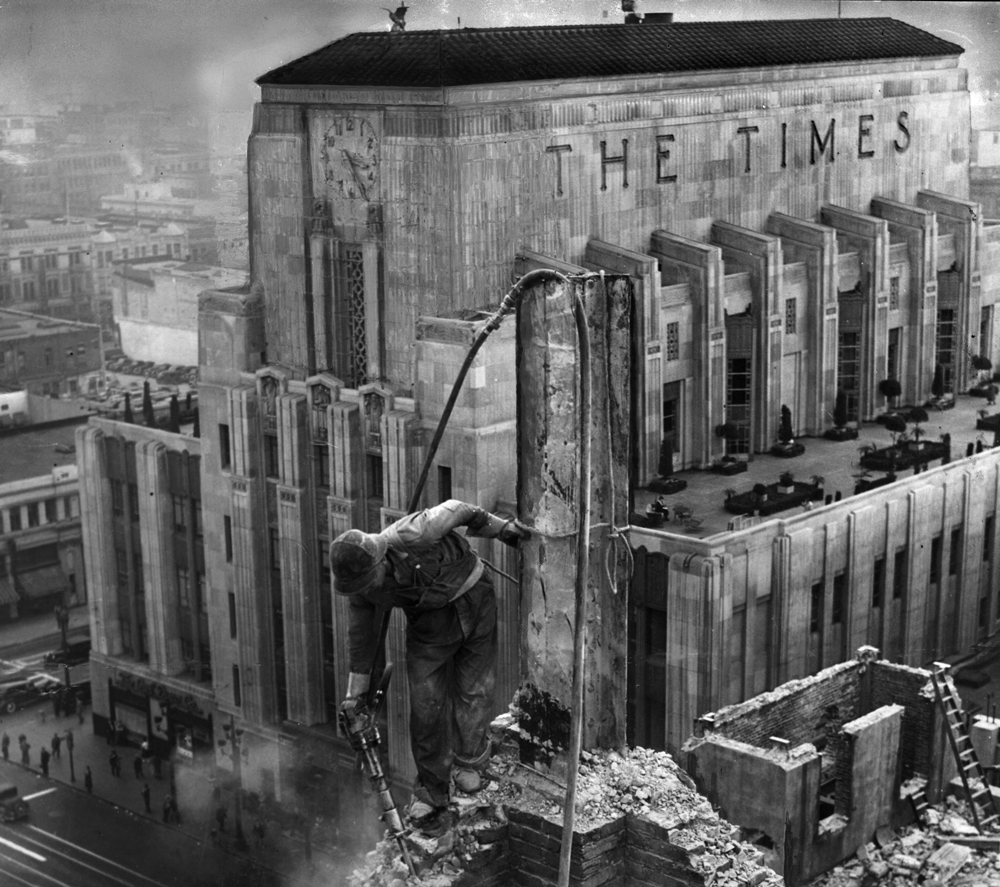
After 137 years, the Los Angeles Times is moving from downtown Los Angeles to El Segundo. The move marks the end of an era for The Times and an opportunity to look back at its storied history. The development of Times Mirror Square, located in the Civic Center next to City Hall, reflects the aspirations of a newspaper that played an essential role in the development of Los Angeles.
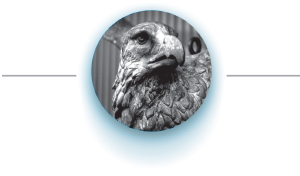

The early buildings
Today the Los Angeles Times is most easily identified by its Art Deco headquarters, completed in 1935 at the corner of 1st and Spring streets. But the paper, which was established in 1881, had had three headquarters before the construction of that landmark building.
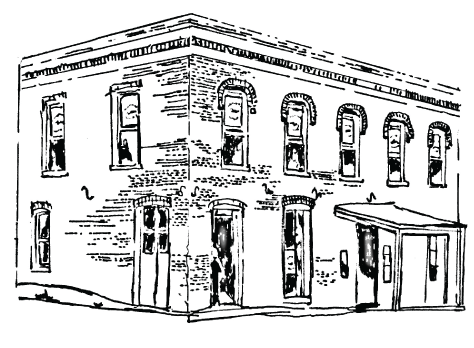
The Mirror Printing Office and Book Bindery begins publishing the Weekly Mirror, an advertising sheet, on Feb. 1, 1873. The pressroom and plant are powered by a waterwheel and housed in a small two-story brick building located near the intersection of Spring and Temple streets. In 1881, the company publishes the Los Angeles Daily Times for Nathan Cole Jr. and Thomas Gardiner, who later sell the publication and assets to Harrison Gray Otis. In 1884, The Times Mirror Co. is incorporated. On Dec. 4, 1881, the first issue of the Los Angeles Daily Mirror is published. The paper comes out every day except Monday. On Feb. 14, 1887, the first issue of the Los Angeles Times is published. It comes out seven days a week, making it a true "daily."
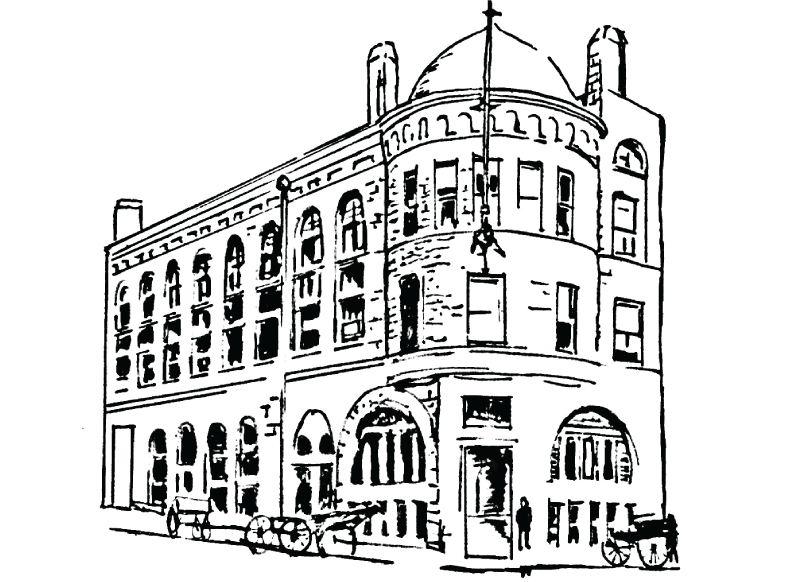
On Feb. 1, 1887, The Times moves into a larger, three-story brick building with a granite facade located at the northwest corner of 1st and Broadway. The distinctive building features a dome rising above crenulations in the facade. On Dec. 5, 1891, the Times eagle is installed between two towers. Gutzon Borglum sculpted the bronze eagle that symbolized the publisher’s motto: “Stand fast, stand firm, stand sure, stand true.” In 1907, the building expands. The six-story addition housed engraving, composing, photo and art departments and also the linotype machines used to place individual blocks of lead type. A double-cylinder Hoe press, capable of making 3,500 impressions per hour, was located in the basement.
On Oct. 1, 1910, an explosion and fire destroy the Times building, killing 21 employees. Ironworker Ortie McManigal eventually confesses, telling how he and fellow activist Jim McNamara came up with the plan in response to Otis’ fierce opposition to unions. Times staff moves to a temporary location while a new building is constructed.
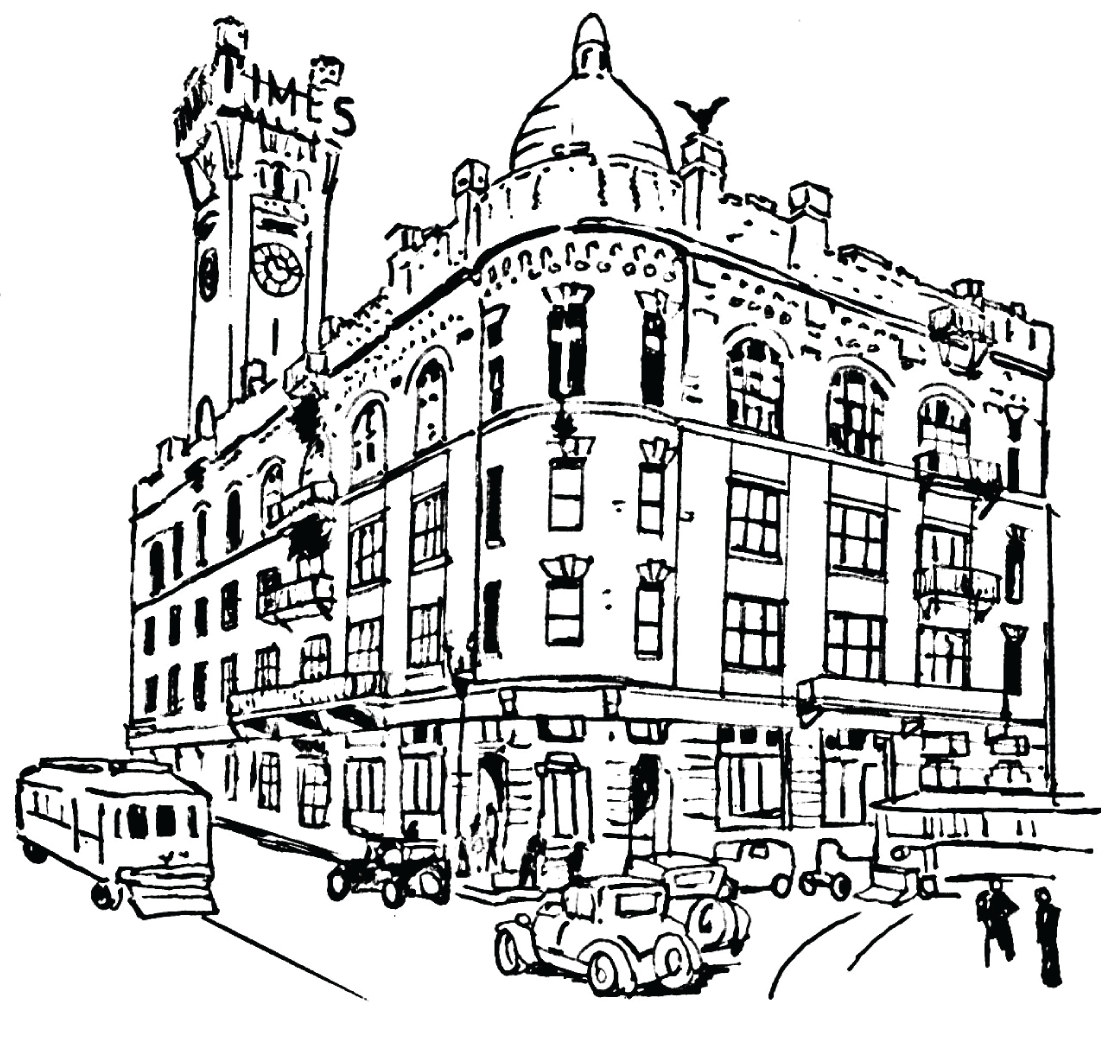
On the one-year anniversary of the bombing, a cornerstone is laid for The Times’ third building at the same location. With the exception of a four-sided clock tower, the new building has a dome and arching windows like its predecessor. The Times moves to the building on Oct. 1, 1912, installing the eagle on a new perch.
Otis dies in 1917, and Harry Chandler becomes the publisher. The Times continues to grow with Los Angeles, whose population would soar from 900,000 in 1920 to 2.2 million in 1930. Chandler commissions architect Gordon B. Kaufmann to design a new building for The Times, located across the street.

Fourth building: Kaufmann’s masterpiece (completed in 1935)
The building features state-of-the-art presses, power generators, an exhibit hall, an auditorium and dining rooms. It is the first building in the nation to be completely air-conditioned. On June 28, 1935, the eagle is placed over the clock, facing north. On July 1, the first issue publishes on the new presses.
Here is what the Times building looked like and where editorial worked as depicted by staff panoramic artist Charles Hamilton Owens in 1935 and colorized by staff graphic artist Lorena Iñiguez Elebee in 2018.
6th Floor
The tower of The Times building housed the air-conditioning system, which was made up of nine separate units. Near the ceiling were the clock platforms, used for making adjustments and repairs to the two exterior clocks, one facing 1st Street and the other facing 2nd Street. Carved in the limestone facade of the tower was "The Times," whose letters were lined with neon and faced Spring Street and Broadway.
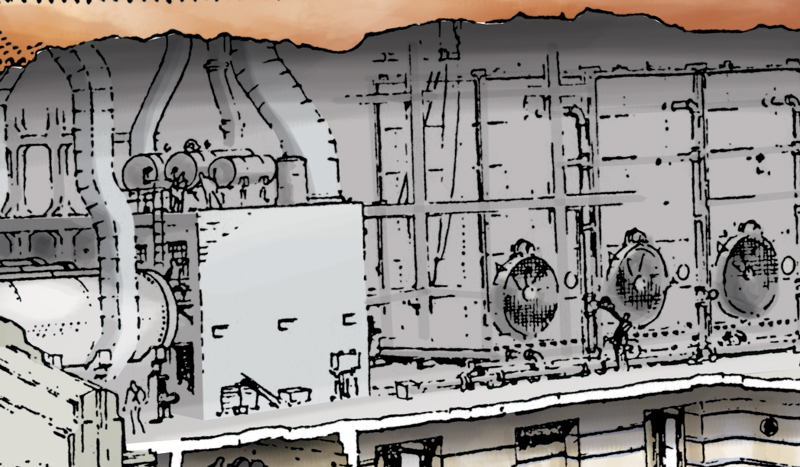
5th Floor
Kept open for events and entertaining, the fifth floor had an exhibition hall and an auditorium with a seating capacity of 800, a lounge and smoking rooms, roof decks, a kitchen and two private dining rooms. There was also a projection room for the auditorium as well as a radio studio.
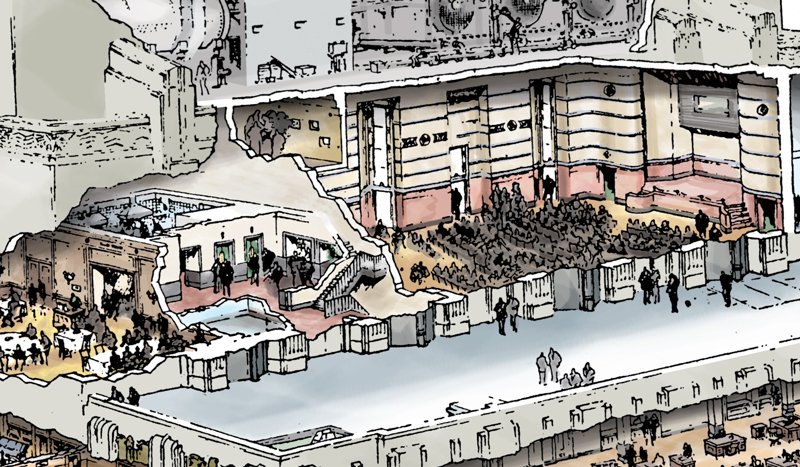
4th Floor
Offices for publisher Harry Chandler, his son Norman Chandler and the company's business manager, Jacob Baum, were located on the fourth floor. Over the north door hung a walnut panel bearing Otis' words: "Stand Fast, Stand Firm, Stand Sure, Stand True." Each of the offices had different interiors. Harry's office featured walnut with red damask fabric. Norman's had avodire and magnolia woodwork, and Baum's, cherry.
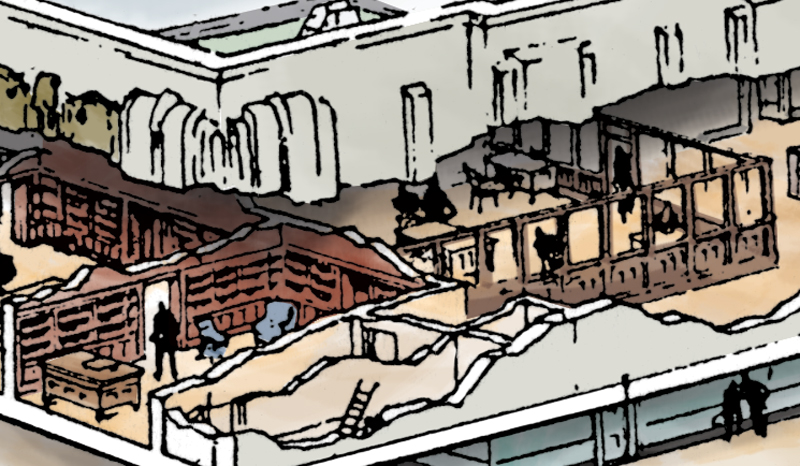
3rd Floor
The main newsroom took up the third floor with reporters seated at desks and the city editor and other department heads given glass partitioned offices. The office of the chief and managing editor was on the third floor, as were the Sunday, Feature departments and picture syndicates. A set of pneumatic tubes were used to send copy to the composing room on the first floor. The main newsroom and art department occupied the third floor.
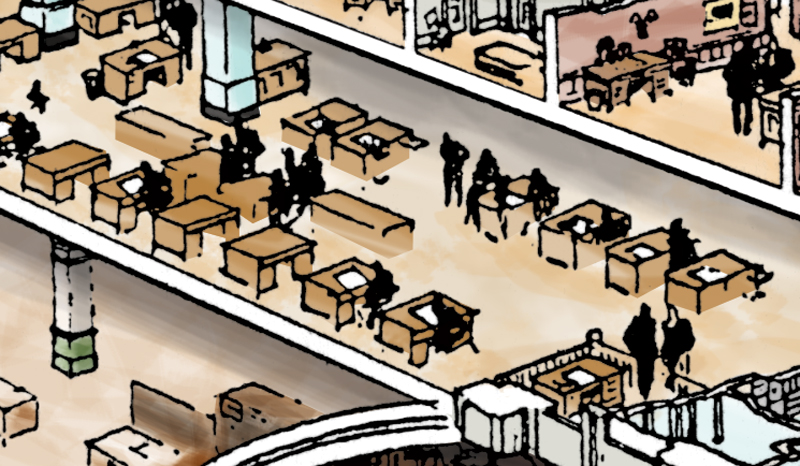
2nd Floor
Above the Globe Lobby were the local and national display departments, promotion department, statistics, stock rooms, mechanical superintendent, multigraph department, purchasing, main telephone exchange and the switchboard.
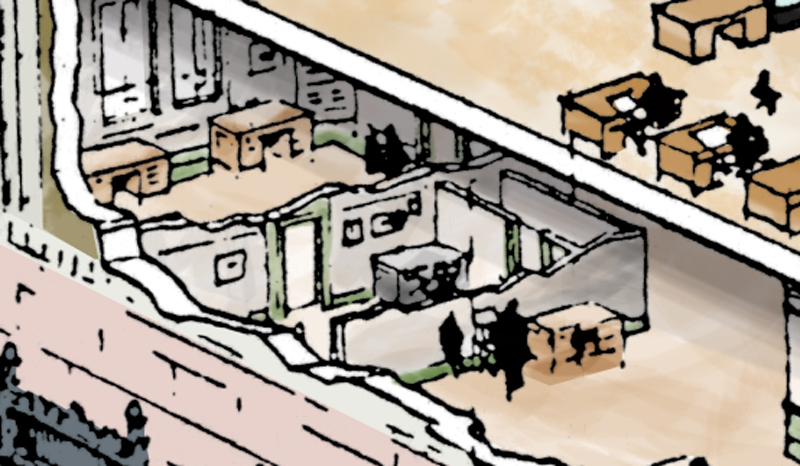
1st Floor
Offices with windows facing 1st Street were available for lease. In addition to the rotunda and lobby, the first floor housed the travel and resort bureaus, the classified advertising and subscription departments and general information. The composing room and stereotype department -- where metal plates, used in printing the paper, were made -- were located beyond the front store space.
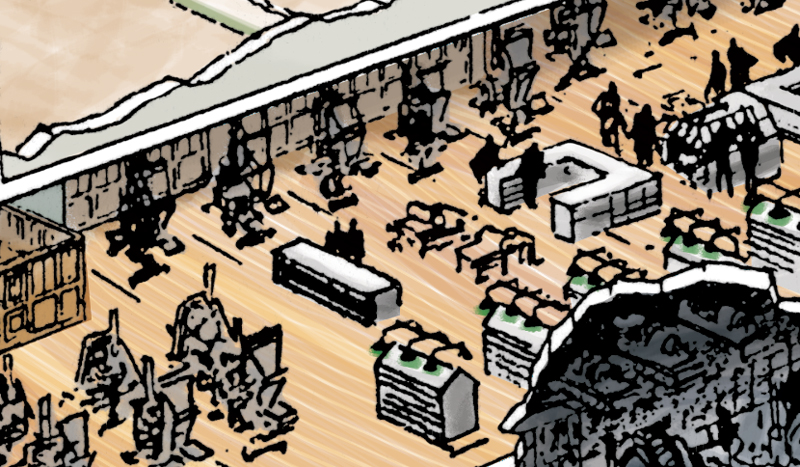
Globe lobby
The entrance doors were adorned with 24 ornate brass plaques representing the activities of the newspaper. An Art Deco pendant lamp hung over the entry landing. Inside the entrance rotunda, a 5 1/2-foot diameter aluminum globe rotated on a base over a compass design of granite and brass. The walls of the rotunda feature 10-foot-tall murals painted in 1934 by Hugo Ballin. The panels illustrate the origins of Los Angeles and various industries. Surrounding the globe, a museum housed historical photos, publications and a linotype machine that was used to place and frame lead text and images. The eagle, removed from the roof in 1956, sat at the end of the elevator lobby.
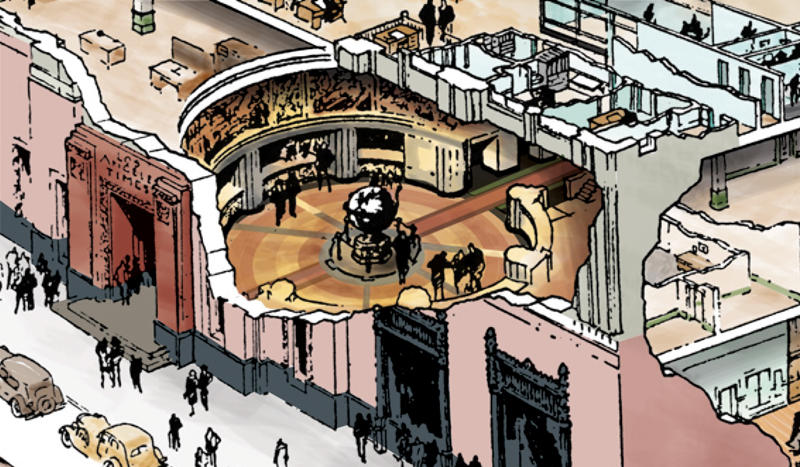
Basement
Newspaper rolls were stored in the basement below the entrance rotunda that housed the globe.
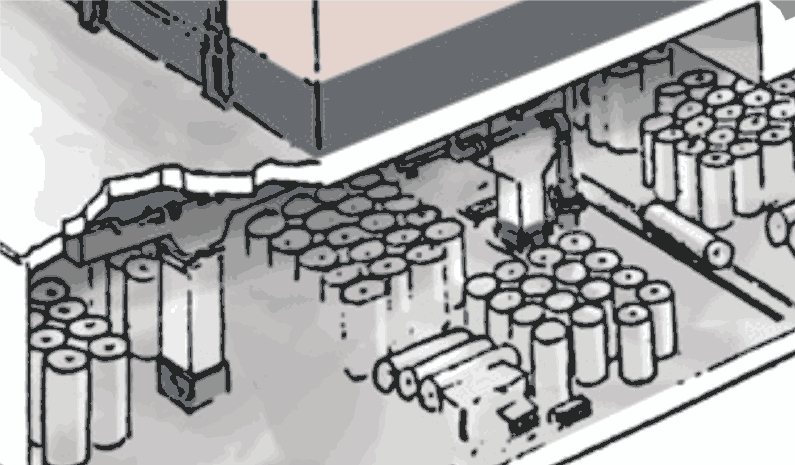
Sub basement
The building's self-contained power plant is located 35-feet below street level. The boiler pit, boiler rooms, water softening plant, power generators and transformers, main switchboard, refrigeration turbines, and the engineer's office are also located here.
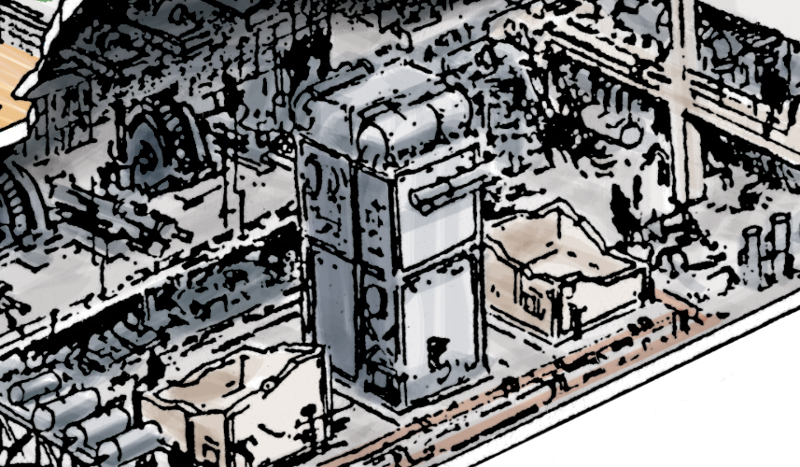
Printing and binding house
When the pressroom opened, it was considered one of the most efficient in the country. It had fire sprinklers and a temperature-control system. The plant was built in two structures on different levels and separated by a 6-inch earthquake joint. The lower level housed two presses, and the upper level featured a visitor's gallery that overlooked the presses.
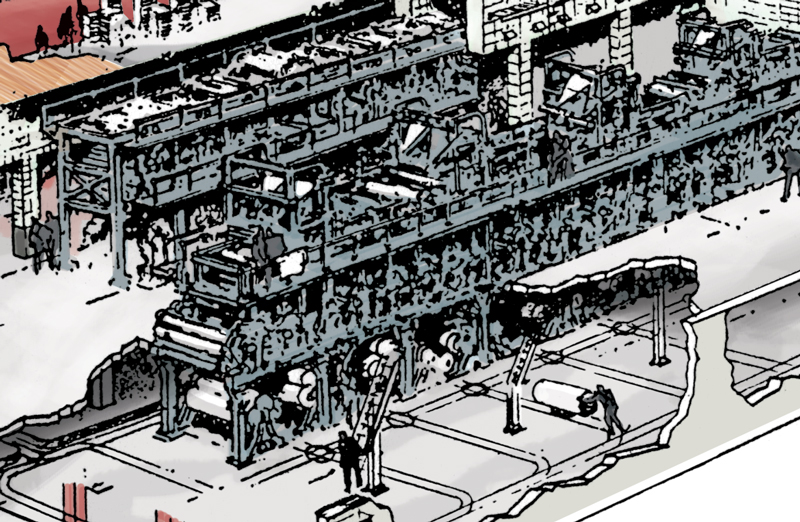
Loading concourse
Newspaper delivery trucks entered on Spring Street through seven doors. The loading concourse was spacious enough for trucks to enter and leave without backing out onto the street. An estimated 240,000 papers were loaded per hour. In 1990, The Times opened a $230-million printing facility two miles away.
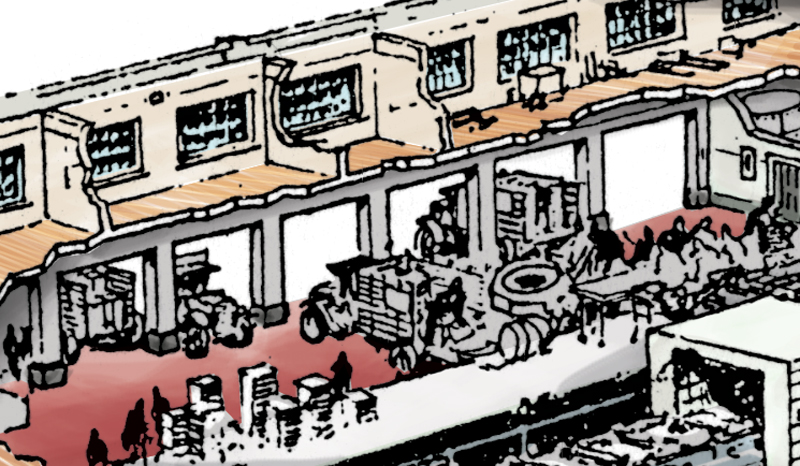

The expansions
The Times received its first Pulitzer in 1942. In 1944, Harry Chandler died, and Norman Chandler became publisher. The Times, boosted by gains in advertising and circulation, began to acquire the rest of the property in its city block, which was soon to be called Times Mirror Square. Expansions included:

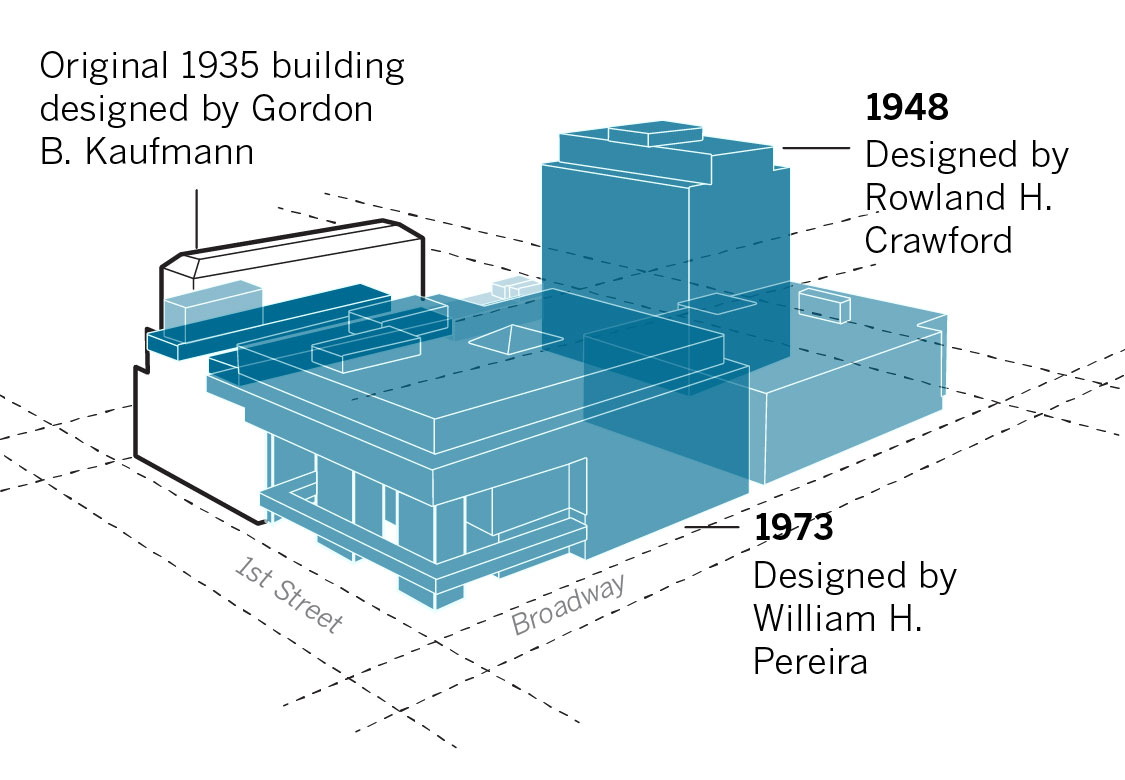
- April 1947: An employee cafeteria opens on the fifth floor.
- July 1947: Employee recreation and reading rooms open on the fifth floor.
- Oct. 1948: Construction is completed on a 10-story tower, designed by Rowland H. Crawford, a protégé of Kaufmann.
- Dec. 1961: Crawford is commissioned again to remodel the north and south buildings. The Harry Chandler Auditorium is dedicated as part of the upgrades.
- 1973: A six-story modernist-style glass and metal building for Times Mirror Co. offices is completed. It was designed by William H. Pereira, who also created the Transamerica Pyramid in San Francisco. The new addition departs in style from the 1935 landmark and is intentionally designed not to compete with the original building.
On April 14, 1980, Otis Chandler becomes editor-in-chief of Times Mirror Co., and Tom Johnson is named the fifth publisher of The Times. Four publishers later, the Chandler family sells Times Mirror Co. to Chicago-based Tribune Co. in 2000, ending a 119-year-long era of the Times being privately owned.
Under Tribune Co., development at Times Mirror Square slows. As the newsroom grows smaller, office space is leased out and film crews shoot in and around the building. In 2013, Tribune Co. restructures after emerging from bankruptcy and splits into two companies: Tribune Media, which owns the television stations, and Tribune Publishing, which owns the Los Angeles Times and other newspapers. In the division, the newspapers lost control of their real estate, leading to The Times and the Chicago Tribune becoming tenants in their own buildings.
In 2016, Tribune Media sells Times Mirror Square to Canada-based real estate developer, Onni Group. In 2017, Onni announced plans to tear down the Pereira-designed building and an adjacent parking garage and build two residential towers. In 2016, Tribune Publishing Co. announces that it will change its name to Tronc, short for Tribune Online Content.
In 2018, Tronc sells The Times, the San Diego Union-Tribune and the Spanish-language publication Hoy to biotech billionaire Patrick Soon-Shiong for $500 million.

Future home and fifth building
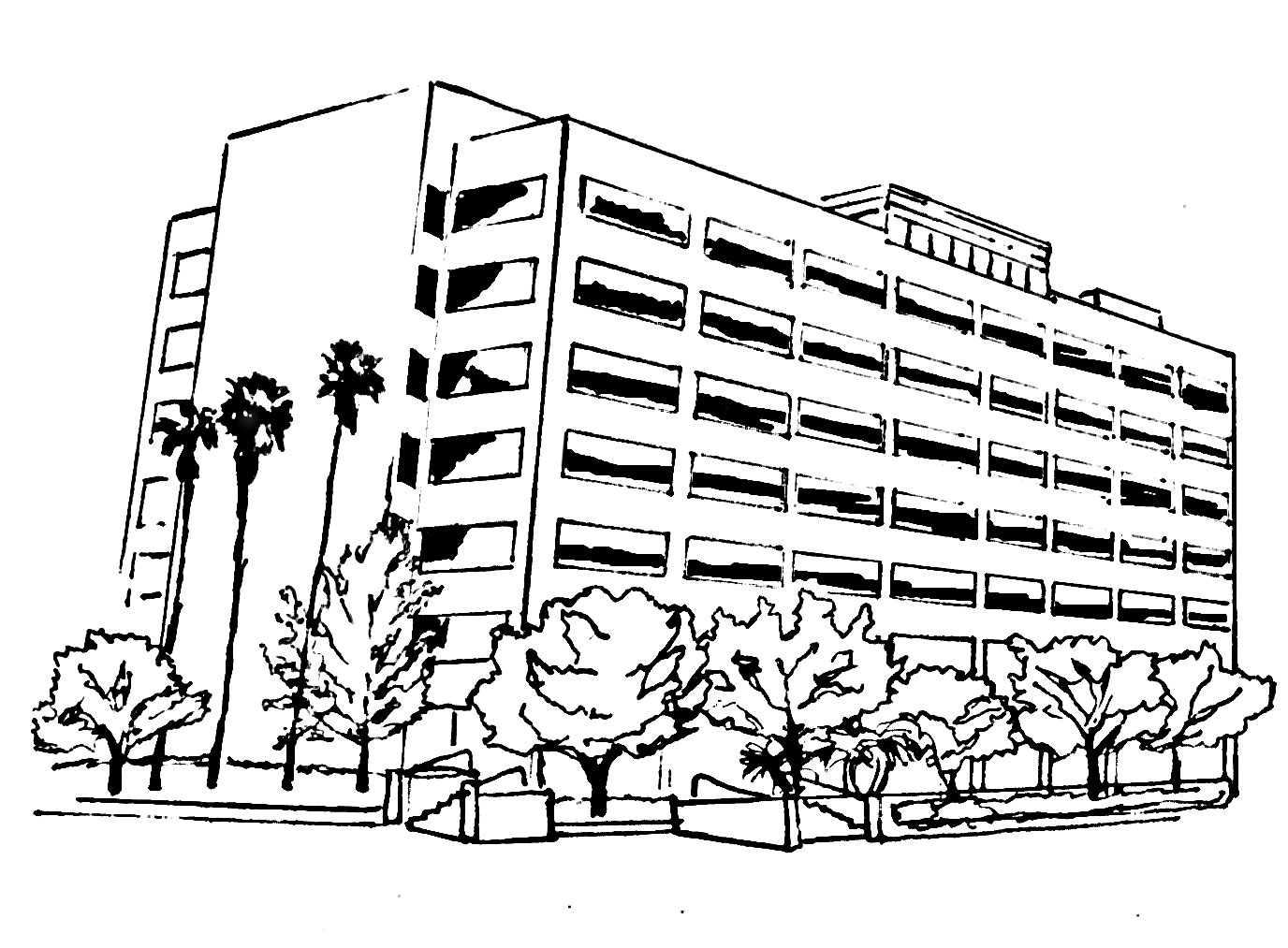

Soon-Shiong moves The Times to a 10-acre campus off Imperial Highway in El Segundo, featuring a 1963 eight-story office building. The building has 145,120 square feet. The newsroom will occupy four floors, with reporters and editors for the entertainment, features and editorial sections on the fourth floor. Staff for the business, sports, graphics data visualization, data desk and design will be on the sixth floor. Masthead editors, reporters and editors for the website, and the metro, national and foreign sections will be on the seventh floor. There will be an atrium on the second floor, and there are plans to build a test kitchen. Soon-Shiong's office will be on the eighth floor along with a conference room, small auditorium and interviewing space. Studios for The Times will be constructed in a separate building on the property. A parking structure is also being built.

Moving out of historical downtown Los Angeles
On July 31, the lease that The Times holds with the Onni Group expires. By then, production of the newspaper and website will have shifted to El Segundo, and the company’s 137-year-long residency in Los Angeles will have come to an end.
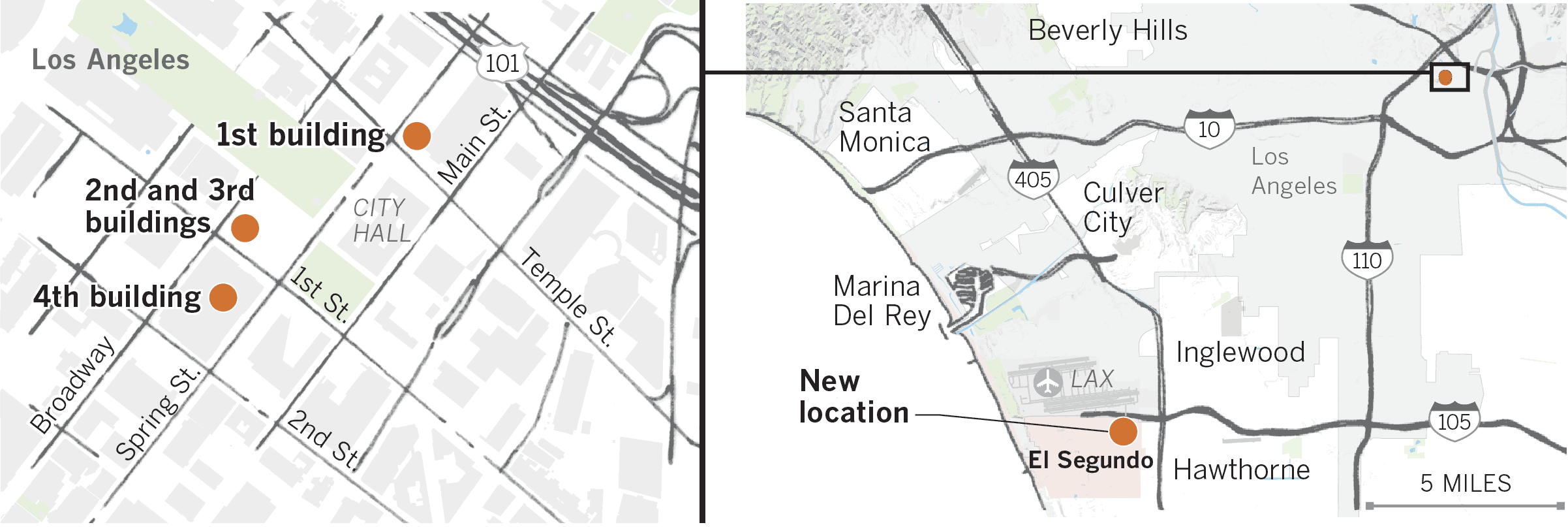
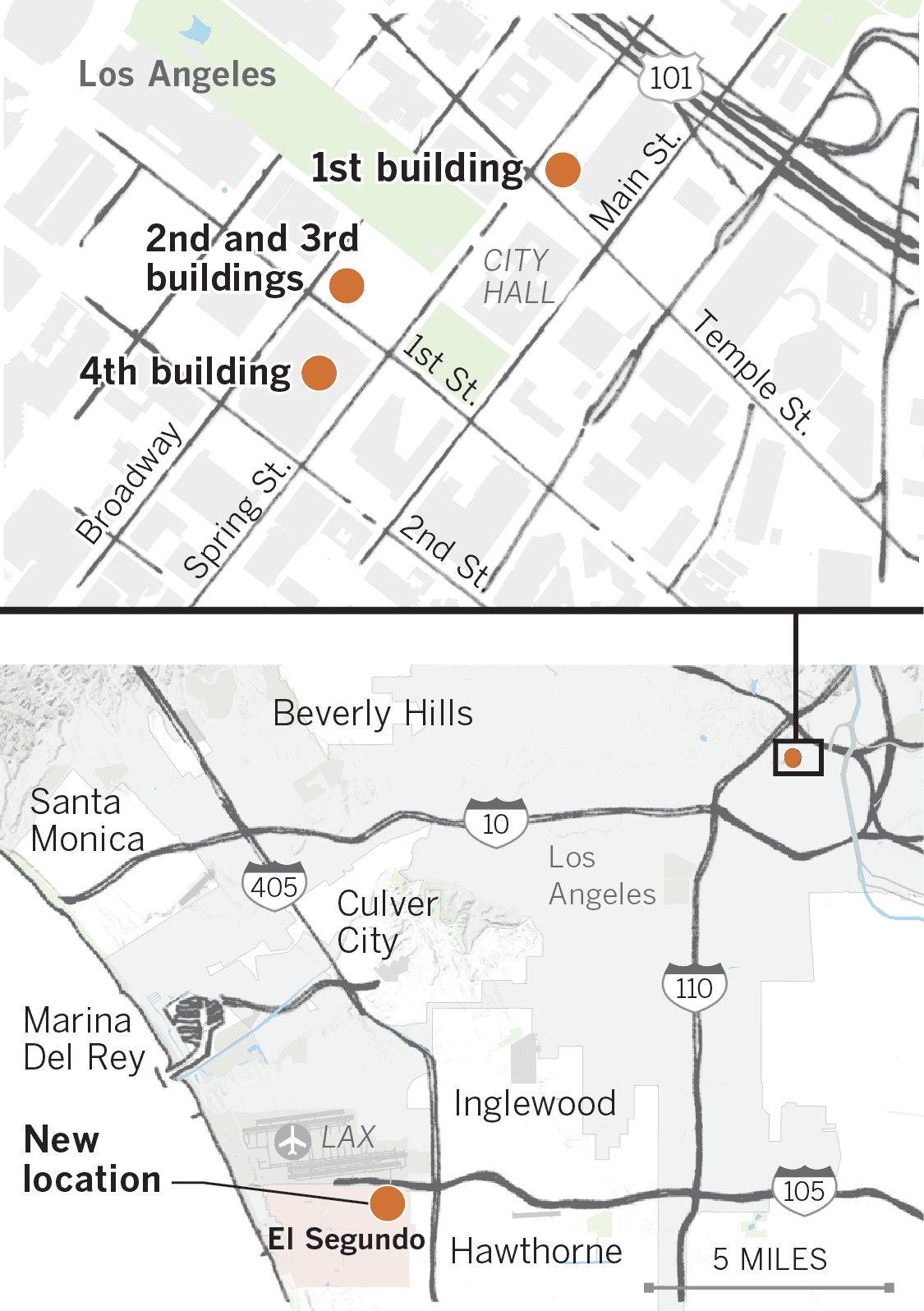
The Times eagle flies again
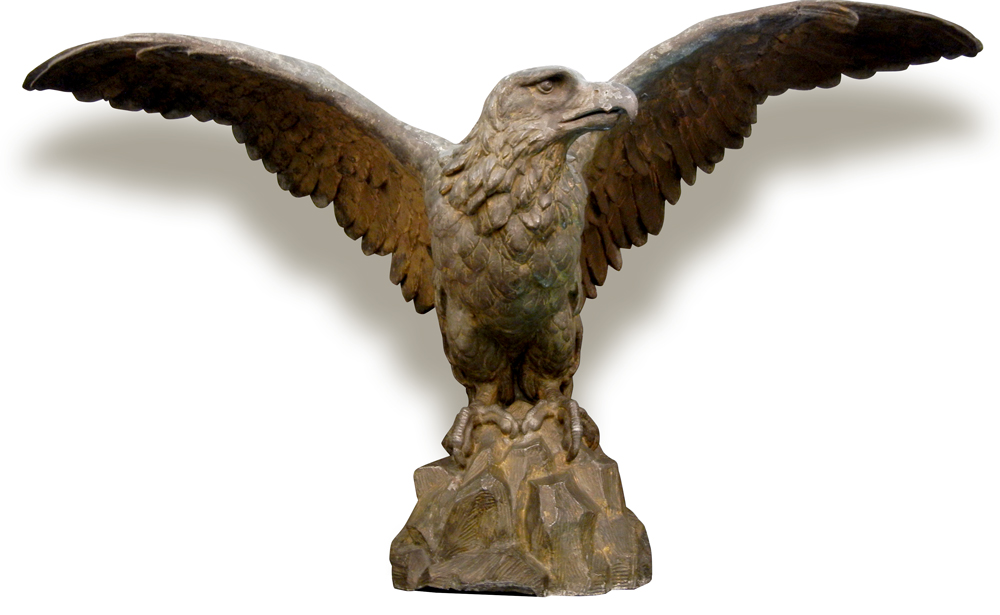
In 1956, it was removed from the outside of The Times building when it started showing evidence of corrosion. Six years later, it was installed in the Globe Lobby. As The Times packed up to move to El Segundo, the eagle, along with a linotype machine and the busts of Otis and the three Chandler publishers, were removed from the lobby.
Sources: Times archives and reporting, Library of Congress, Los Angeles Conservancy, Architecture and Design Collection - Santa Barbara, Los Angeles County Office of the Assessor, Nextzen, OpenStreetMap
Credits: Development by Ellis Simani. Cary Schneider, Jon Schleuss and Len De Groot also contributed to this story.
